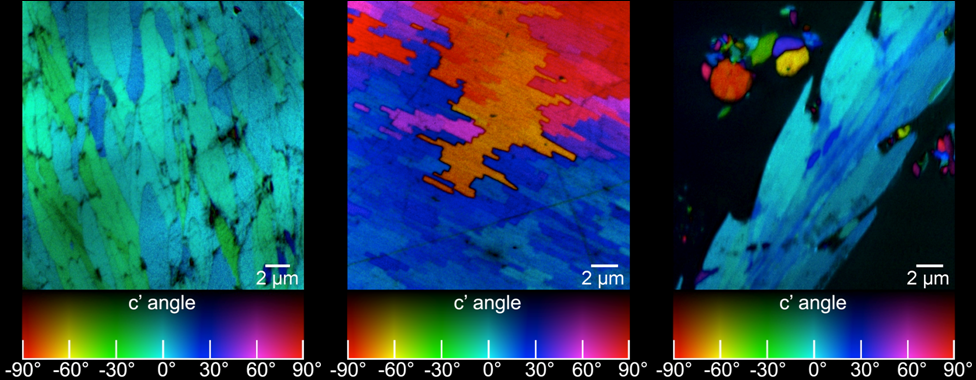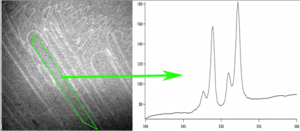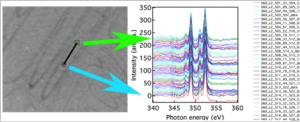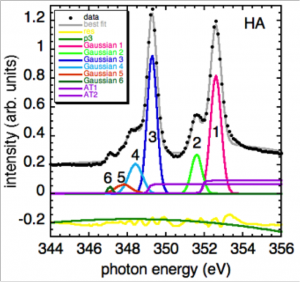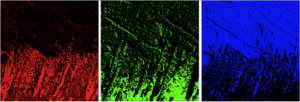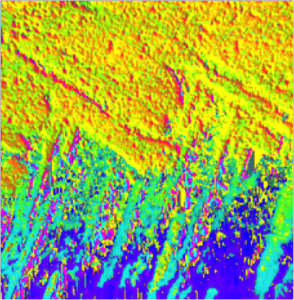GG Macros
The Gilbert Group Macros (GG Macros) were developed by Benjamin Gilbert (bgilbert@lbl.gov) with extensive interaction and feedback from Pupa Gilbert. The GG Macros run on Mac and PC, are ready-to-use, free of charge, and are recommended to analyze synchrotron spectromicroscopy data, that is, images stacked as a function of photon energy, or polarization of the illuminating x-rays.
1. Download Igor Pro 8 from http://www.wavemetrics.com/
2. Download both the GG_Macros_Manual 33 and GG Macros 33. (Updated July 11th, 2021.)
3. Follow the instructions in the manual to place the macros in the correct folders on your computer.
4. Contact Pupa Gilbert at pupa@physics.wisc.edu if you have any questions.
In a nutshell, the GG macros enable you to:
Do quantitative analysis of the orientation of carbonate crystals. For example, the aragonite (CaCO3) tablets in nacre can be distinguished by their crystal orientation as shown below. At a single linear polarization (left) two tablets (magenta dots, or blue dots) may display very similar gray levels, but their orientation can be quite distinct, when fully analyzed at multiple polarizations (see J4 in the manual).
Obtain the 3D crystallographic orientation of carbonate crystals. The in-plane orienatation of the c-axis (termed c’ angle) is displayed as hue, and the out-of-plane orientation is displayed as brightness, from full color to black.
Extract spectra from mouse-drawn ROIs
Extract spectra from a single pixel
Extract spectra from pixels along a line
Do peak fitting of extracted spectra
Display the spatial distribution of individual components with known spectra
The individual components and their relative concentrations can then be combined (in Adobe Photoshop ® ) in separate channels and displayed at once.
Misorientation analysis in PIC maps
Download: PICmapdeltac
Analysis code by Cayla Stifler for measuring the misorientation of c-axes in two adjacent pixels in a PIC map. Required inputs are: a file with the RGB values of each pixel, and the dimensions of the PIC map.

